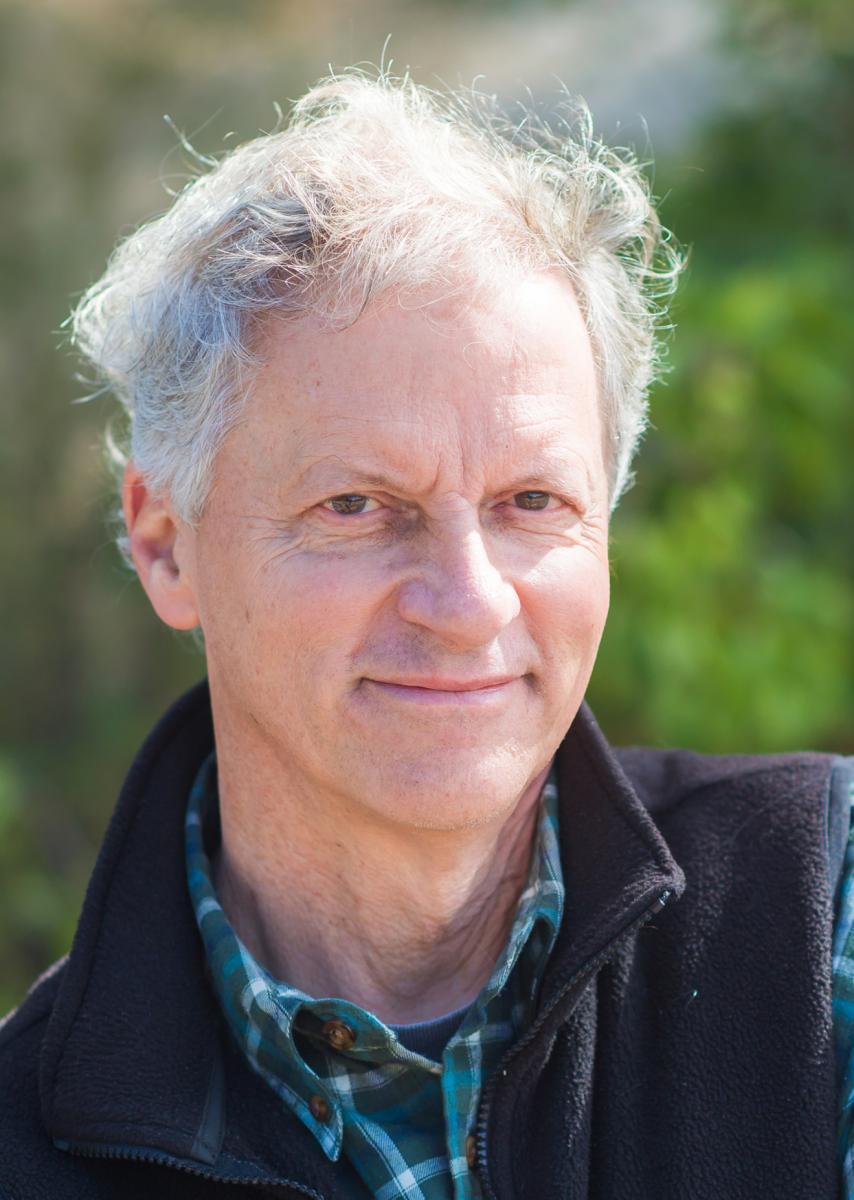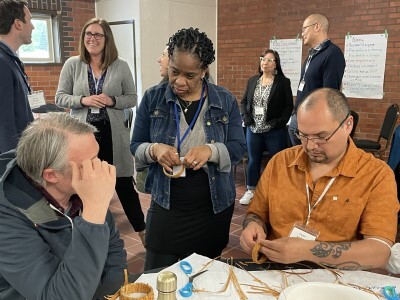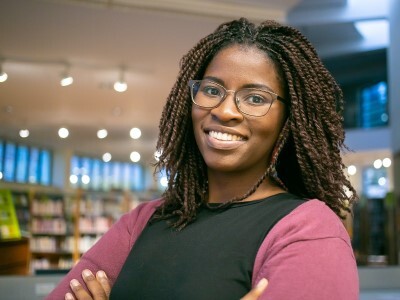Transformation Science: The Emerging Practice of Next Gen Change Management
Topics

Next generation learning is all about everyone in the system—from students through teachers to policymakers—taking charge of their own learning, development, and work. That doesn’t happen by forcing change through mandates and compliance. It happens by creating the environment and the equity of opportunity for everyone in the system to do their best possible work.
If young Americans are going to emerge from our public schools with the capacities and mindsets needed to address 21st-century challenges, we who serve them—and the schools and organizations we're part of—must learn to embody those capacities and mindsets ourselves.
Pat Deklotz was in her first year as superintendent when the Kettle Moraine (Wis.) school district board unanimously approved this charge: Transform the educational delivery system to better and more efficiently meet the needs of all students. The board then stepped back; it was Deklotz's job to figure out how. A former business leader in her first stint as a superintendent, Deklotz remembers feeling certain about just one thing: that she herself did not have the answers.
But she had a pretty good idea who might.
Across the country at Vista Unified school district in exurban San Diego, in the midst of executing a whole-district transformation plan initiated by former Superintendent Devin Vodicka, Assistant Superintendent Matt Doyle also recalls feeling certain about one thing: that Vista Unified would not get the all-in commitment, risk-taking, and shared vulnerability it needed from the teachers in its cohort of transforming schools if they were still subject to the tradition-bound requirements of the district's evaluation system.
So, he thought: What if they were not?
Today, the Kettle Moraine school district is nationally recognized for the sustained power of its transformation effort and the way that its superintendent brought it about: by establishing a districtwide culture of teacher and school leader empowerment, protected risk-taking, and deeply supported follow-up. The district now provides a range of learning-design choices at all school levels, including four district-authorized charters and three schools-within-schools, all of them designed from the ground up by teams of Kettle Moraine educators.
Vista Unified, meanwhile, guaranteed the teachers it was asking to transform teaching and learning that it would shift the annual evaluation system to a five-year process that provided the time and space to reimagine their practice without the fear of someone looking over their shoulder while they tested out new learning strategies. This move is one element in a widely praised, many-faceted, opt-in effort to transform adult and student roles, school culture, and learning practices, all toward better preparing Vista Unified graduates to thrive in the 21st century.
There are 20, 50, hundreds of additional stories, large and small, to tell about these districts and how they are orchestrating the changes they want to see. They are part of a small set of six school districts identified by the nonprofit initiative Next Generation Learning Challenges (NGLC) as practitioners of an emerging new discipline, one that NGLC is calling: Transformation Science.
These six districts (Kettle Moraine and Vista Unified, plus Lindsay and Arcadia in California; St. Vrain in Colorado; Henry County in Georgia) are using language and strategies that they have cooked up themselves or adapted from others over the five to 10 years since they committed to this ambitious level of change. But they are all operating on a similar, foundational premise—one that sounds deceptively simple but that in fact challenges literally everything about the ways they conduct their business and pursue their mission.
Here it is: What's envisioned for the students tomorrow must already be true for adults and schools today.
Think about it. There is gathering momentum in the U.S. and internationally toward far deeper, broader, richer definitions of student success—visions of personal capacity that draw deeply on the complex demands of the 21st-century economy and just as deeply on advances in learning and social science. Can the agile, self-initiating, super-collaborative, problem-solving lifelong learners depicted in these definitions really emerge from organizations rooted in the mindsets and operating cultures of top-down, compliance-driven, dehumanizing bureaucracies?
Answer: no. At least: not as an expression of a New Normal, where every child—not just those sorted into the most accelerated layers of public education—has the opportunity and the support to develop those capacities.
The kind of transformation required to bring about that New Normal calls for nothing less than the development of a parallel universe of mindset and practice, one marked by the same degree of supreme internal consistency as the one that has defined public education in the U.S. since the early 20th century.
The Old Universe and the New One
| Prevailing Model | Emergent Model | |
| What is valued | Efficiency and order | Humanity and relationships |
| What motivates people (adults and children alike) | Carrots and sticks | Purpose, autonomy, mastery, fulfillment, service |
| How we organize | Top-down, compliance, command and control | User-outward, enabling, collectively |
| Student learning | For too many and too much of the time: Sit 'n' get | Experiential, personalized, collaborative, authentic, student-driven |
| Adult learning | See "student learning," above | Experiential, personalized, collaborative, job-embedded, teacher-driven |
| Where we focus | Gaps and deficits | Strengths and contributions |
| What constitutes success | Proficiency on traditionally defined academic goals and metrics | Self-efficacy with true and agile capability |
| Classroom artifact | Worksheet | Work product |
| Assessment philosophy | What's measured is what matters | How can I improve? |
| Resulting mindset | Is it on the test? | What problem can I tackle next? |
| Outcomes | Sorting, primarily by income and race | All students fulfilling their highest potential (aspirational) |
In the prevailing model, the actions and structures of the organizations, agencies, and policies shaping K-12 public education reflect the assumptions about incentives and organizational design that developed alongside industrialization. These assumptions have been reflected in their entirety by prevailing classroom practice, which has been dominated by one methodology—direct instruction. The complete coherence and profound consistency of this model from state and federal offices down through district bureaucracies to 1st grade classrooms is what has enabled it to literally eat all efforts to significantly change it and convert those efforts into benign (meaning: nonthreatening) food groups.
Practitioners of Transformation Science tend to cast the work as an opportunity to think and act differently, rather than as a problem to be solved.
In the emergent model, leaders like Pat Deklotz and Matt Doyle understand that compliance-driven cultures cannot catalyze agency-driven learners. They also understand that they work inside an industry that reflects—still!—factory-floor structures and mentalities more pervasively than many 21st-century manufacturers do. And so they are developing and piloting and embracing a set of strategies designed to establish a New Normal within their organizations. NGLC's study of their districts and others like them has led us to propose the following five hallmarks of Transformation Science, within the context of public education:
- Transformation Science supports the deliberate, informed act of fundamental self-disruption. It is born from the recognition that doing a better job of what you're currently doing won't get you to where you know you need to go. It begins when examining the root causes behind social failure prompts a reassessment of everything—goals, assumptions, strategies, cultures, desired outcomes, and their truest indicators. In this way, though it may incorporate many aspects of Improvement Science process, its terrains of inquiry and practice extend far beyond Improvement Science's normal scope, defined as it is by close attention to currently prevailing indicators.
- Transformation Science is more about humans than systems. It is fueled by the recognition that we tend to build systems that reinforce prevailing mindsets and practices. The systems then become more important than the humans working inside them. The only way to fundamentally change the practices (and thereby, the outcomes) is to confront those systems with the one force capable of taking them down, which is the power of humanity assembled around shared purposes. (Margaret Wheatley has written widely on this idea.) This is easy to say—and profoundly challenging to do successfully. It requires the empowering of change-agent leaders to meet or circumvent pushback from the systems that surround them, in part through their empowering of colleagues and stakeholders working and living within those systems.
- Transformation Science demands that organizations "be the change." Problem identification, solution framing, testing, measuring, and refining—the core tactics of Improvement Science—are important but insufficient when transformation is the goal. Genuinely transformed practice requires the equally genuine transformation of organizational structures, cultures, habits, and mindsets in ways that reflect the tenets of the envisioned practice. Leaders practicing Transformation Science understand the importance of "leading from behind," rather than leading from out front. The story of transformation is more about the community than its leadership. The pace of transformation moves at the speed of trust plus agency—and not a bit faster.
- Transformation Science embraces wider ideas of "science." The processes that comprise Western ideas about science and scientific methods—e.g., repetitive experimentation to produce identical outcomes—can have a narrowing effect that has strong value in some contexts (say, addressing underperformance within highly controlled environments) but is inhibiting in others (addressing underperformance where root causes are only partially understood, participant decisionmaking is unpredictably complex, and even the outcomes and key indicators are in flux). Deliberate efforts to deeply transform within contexts marked by deep complexity benefit from holistic, collectivist, context-rich, narrative, interdependent, inclusive, and culturally responsive thinking. Practitioners of Transformation Science tend to cast the work as an opportunity to think and act differently, rather than as a problem to be solved.
- Transformation Science is at once deeply local and broadly connected. Local history, capacities, populations, cultures, and operating conditions must fundamentally shape transformation strategy in order to ensure widespread personal ownership, not just "buy-in." What works in one set of contexts will likely not work in the same way in a different context. At the same time, never-ending openness to learning from others (both within the field and the relevant work of people and organizations in other fields) is crucial for success. So are strong external learning communities of collaborative peer transformers, along with wider social networks. This work is too difficult to try to accomplish alone.
Are we reaching too far in declaring the establishing of a new "science"? Perhaps—within the context of traditional Western academic thinking. But at its core, Transformation Science is more of a verb than a noun and more of a state of mind than a set of accepted, evidence-based practices. NGLC will complete its 18-month R&D project to explore these ideas in March 2020, and expects to publish—with the active participation of the six districts, a number of change-management experts and contributions from a corollary network called the Deeper Learning Dozen—its findings and recommendations for districts seeking to learn from those that have gone before them. We are under no illusions that simply publishing the findings will enable dozens or hundreds of districts to move significantly forward. To walk its own talk, Transformation Science will need to embody all of the principles it espouses, which (to our minds) suggests more investment in networks and relationships than in case studies and web-based toolsets.
But the time is right. The need is clear. If young Americans are going to emerge from our public schools ready to tackle the profoundly complex challenges of the 21st century, those who serve them need to tackle the equally profound challenge of enabling that readiness—by transforming ourselves and the systems that have shaped our actions for close to five generations.




